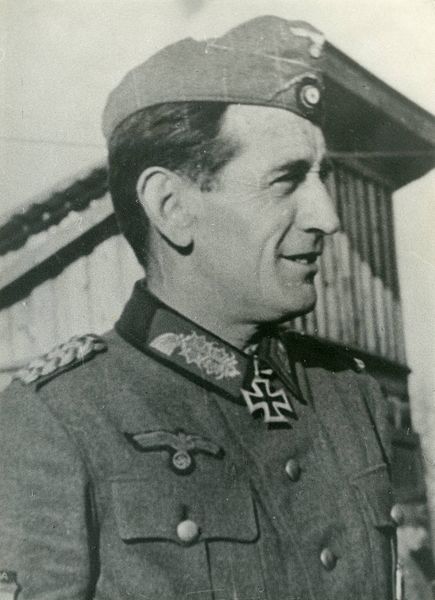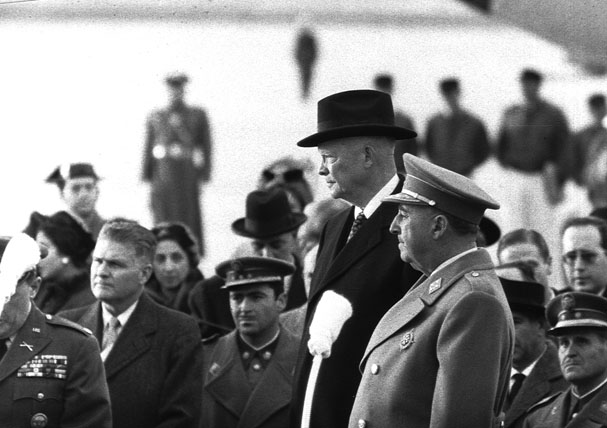Foreign policy (1939-1959)
During WWII Spain was officially neutral (non-belligerent), although relations changed as war did:

- There was an initial support to the Axis: Franco met Hitler in Hendaye (France) on 23nd October 1940 in order to negotiate the entry of Spain in the war. Franco demanded the north of Africa in exchange of joining the Axis.Hitler rejected ceding those territories to Franco. Spain sent the Blue Division (División Azul) led by Muñoz Grandes in order to fight with the Axis in the USSR.
- After the German defeat in the USSR, Franco declared the neutrality of Spain and did not support the Axis any longer.
After WWII Spain was internationally isolated since it was a regime that had been created with the assistance of the Nazi-Fascist powers: All the ambassadors left Madrid in 1946, except Portugal, Argentina, Switzerland, and Ireland’s. Spain was not allowed to join the newly created UN.
Some nations supported Spain: Portugal and Spain signed the Iberian Pact (Pacto Ibérico) in 1942 to give mutual support. Franco signed a protocol with Perón’s Argentina in 1948 so as to import Argentinean products.
The Cold War in the 1950s was extremely beneficial for Spanish international relations since the USA sought support against the spread of communism: Spain could join some international organisms thanks to this new policy: FAO (1950), UNESCO (1952), UN (1955).
There were also some international agreements that Spain signed in this period:
A Concordat was signed in 1953 with the Holy See:
- Spain gained its right to present bishops for its dioceses.
- In exchange, the Church got tax exemptions, economic support for the clergy, and control over education.
An essential agreement was signed in 1953 with the USA due to Franco’s anti-communist ideas:
- The USA would guarantee economic and militar support to Spain.
- Some American military bases were built in Spain: Torrejón de Ardoz, Morón de la Frontera, Rota, and Zaragoza.
